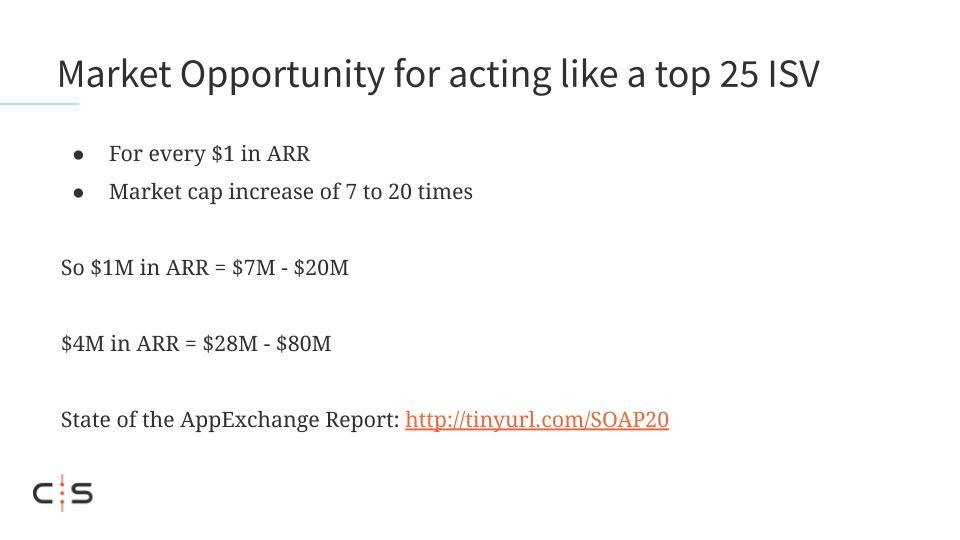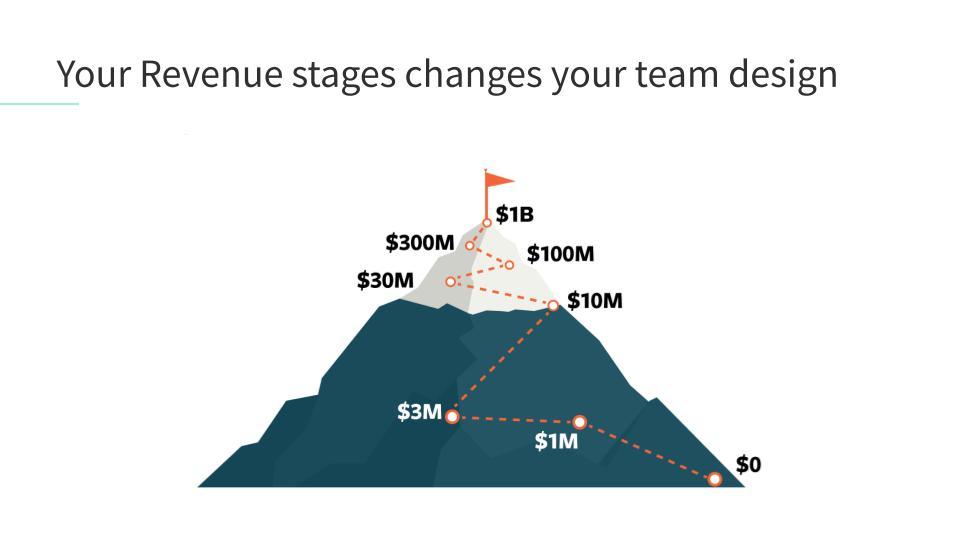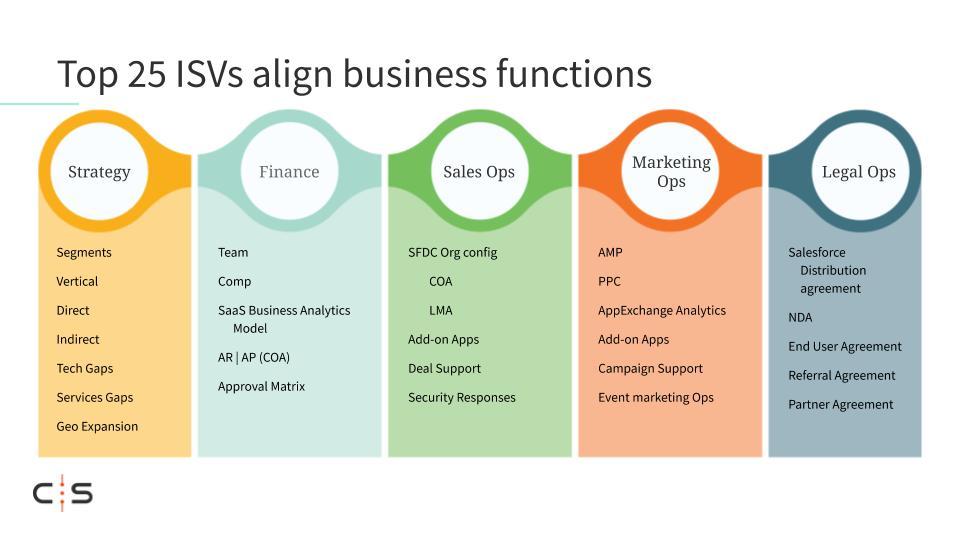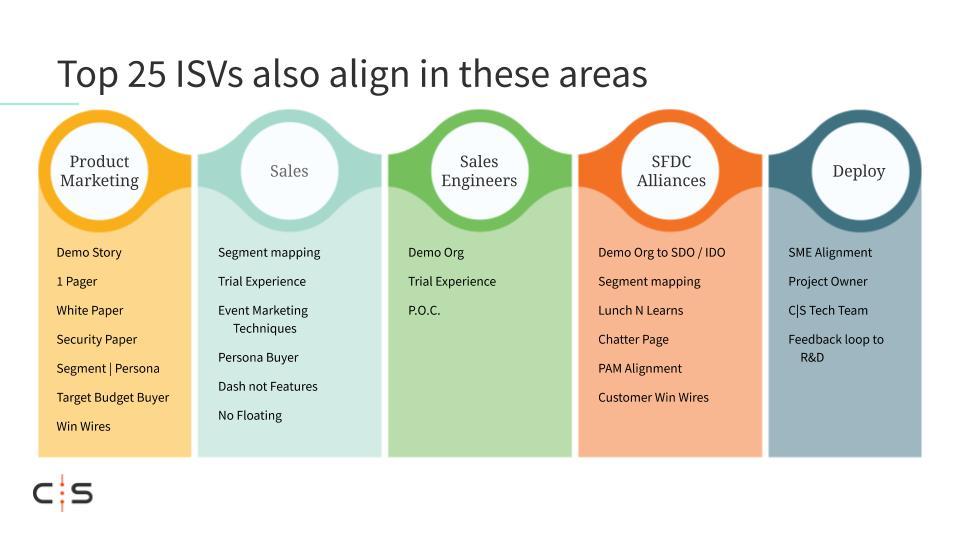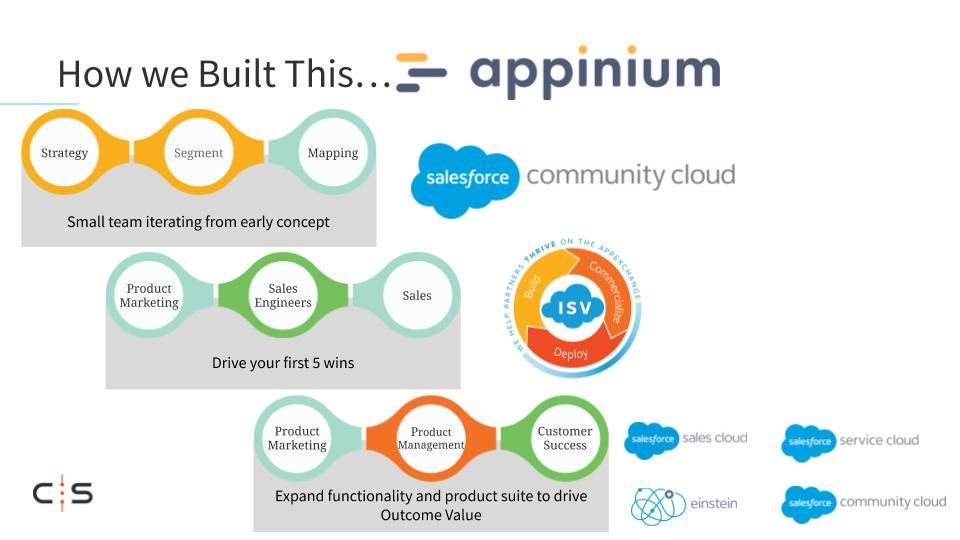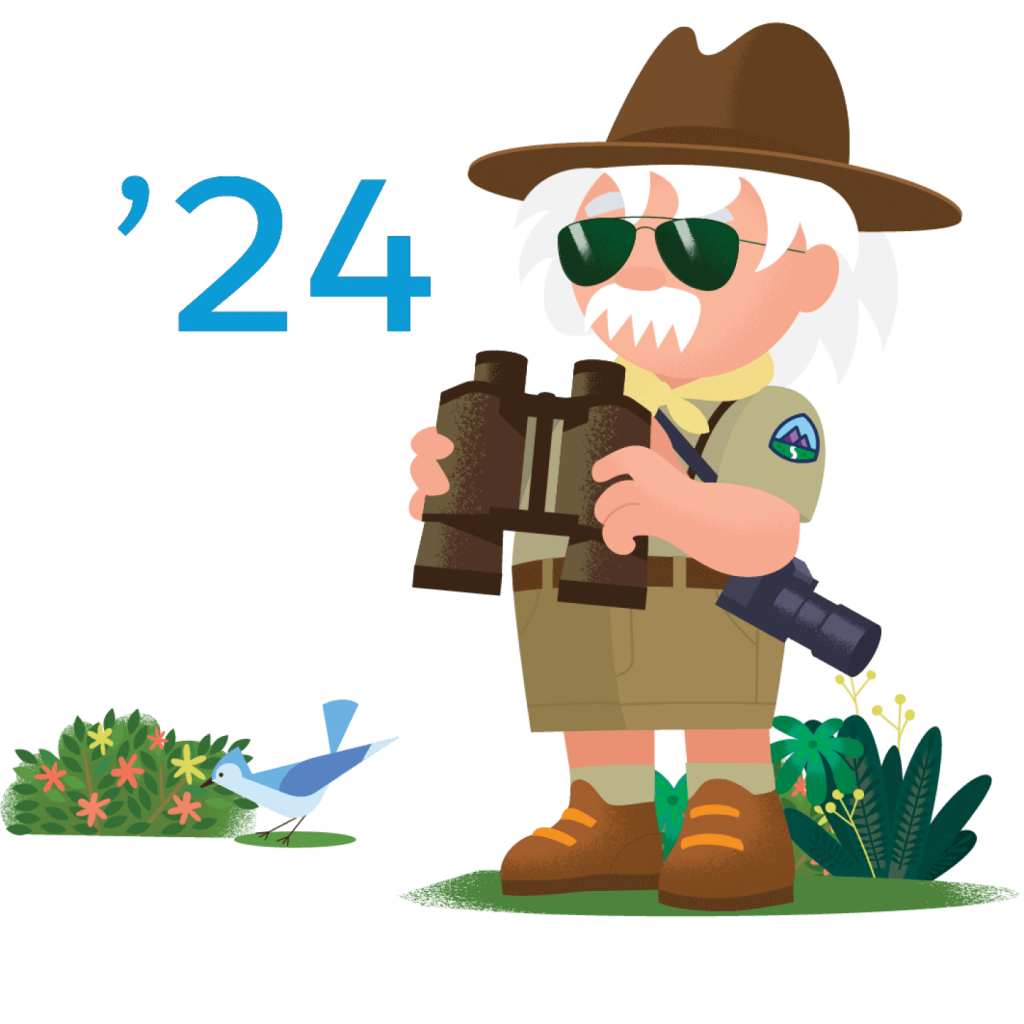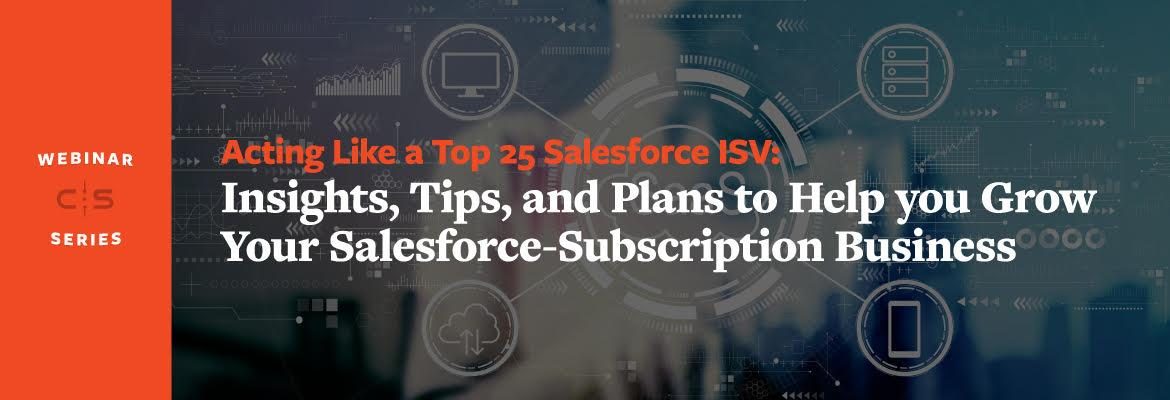
With 12 years of experience under our belts, we’ve had the chance to work with some amazing companies over the years. One question we often find ourselves responding to clients about is, “How do the best ISVs position themselves for commercial success?”
This can be a challenging question since every organization’s strategy, structure, and size all can vary so greatly. However, for companies who execute, there is a tremendous upside.
We brought together Sean Hogan, CodeScience CRO, and Steve Jacobson, Appinium CEO and Founder, to share their knowledge of the Salesforce ecosystem and their experience of working with and building Top 25 ISVs.
Watch the Webinar in Full Here.
Top 25 ISV Happen to Companies of All Different Sizes
One misconception we have to address with our clients is that to function like the best of the best — you need a large team with specialized functions focusing solely on your Salesforce offering. While having a larger team can help, there are many ISVs with small teams who specialize and win big.
Sean Hogan explains, “Your revenue makeup changes over time. As you meet certain subscription milestones, your team design will need to adjust and adapt. You don’t need a large team in the beginning — you need a focused team that can drive customer wins.”
Alignment is Key for Execution
While the above is a generic outline of the functions an ISV must think about, what is key is selecting a few, executing them well and building from there. Consider what is most important to your business, decide on an owner, and then support that person to help them execute. Finally, don’t be afraid to ask for help.
We teach ISVs of any size that it is about strategically aligning the pieces above to specific business initiatives, specific job functions, and iterating.
Steve Jacobson, shares how Appinium focused in on 3 critical areas at a time, made inroads, secured wins, and ultimately has set Appinium on the path to becoming a top 25 ISV.
Steve explains, “In starting out with strategy, you must figure out where you’re going to attack, how you’re going to do it, what segment or vertical you go after…and see how your product can fit in Salesforce broader strategy.”
From there, he was able to secure early customer wins, understand what his customers needed, and develop a roadmap to meet those needs. Each customer win enables key product feedback, and you gain the confidence to expand your app’s functionality. Eventually, you begin to build a cross-cloud strategy.
The Power of Community
Our Q&A session spanned over 30 minutes for the webinar. Sean and Steve offered advice, lessons learned along the way, and specific insight into how AppExchange Partners could better position themselves for success.
One core message that surfaced time and time again was to reach out to and connect with other partners. Steve shares his thoughts and experience in response to a question from one of the attendees.
“Personally, I think it is my duty and my responsibility to work with other ISVs to help them be the greatest that they can be during this process.”
Partners partnering is one of the most powerful things an ISV can do to strengthen their offering — but you have to give back as much as you take away.
If you’d like to hear the webinar in full and learn more about what it takes to get started for the first time, the broader picture of how ISVs structure themselves for success no matter where they are in their journey, and a deep discussion on how Sales teams should evolve as your ISV matures, you’ll have to register here.
Companies build their Salesforce businesses better with CodeScience. It is our mission that no ISV navigates Salesforce alone. If you’re looking for guidance on your product, help supporting your customers, or just need to ask an expert, get in touch today!
